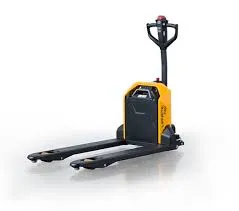


Understanding Lifting Equipment Importance, Types, and Safety Practices
Lifting equipment plays a crucial role in various industries, ranging from construction and manufacturing to warehousing and logistics. Its primary function is to lift and move heavy loads safely and efficiently. As businesses strive to increase productivity and safety, understanding the types and uses of lifting equipment becomes increasingly important.
Types of Lifting Equipment
Lifting equipment encompasses a wide range of devices designed for lifting and moving loads. Some of the most common types include
1. Cranes Cranes are versatile machines that can lift heavy loads to great heights. They come in various types, including tower cranes, mobile cranes, and overhead cranes, each serving specific applications. For instance, tower cranes are often used in the construction of tall buildings, while mobile cranes provide flexibility for different job sites.
2. Forklifts Forklifts are powered industrial trucks designed to lift and transport materials over short distances. They are widely used in warehouses for loading and unloading goods and can be equipped with various attachments for different lifting tasks.
3. Hoists Hoists are devices that use a drum or lift-wheel to raise and lower a load. They can be manual or electric, and are commonly utilized in smaller applications such as garages and workshops. Chain hoists and electric hoists are popular choices for lifting heavy equipment or materials.
4. Elevators and Lifts Elevators and vertical lifts are essential in moving people and goods between different levels of a structure. In industrial settings, freight elevators specifically transport goods, ensuring efficient logistics within buildings.
5. Slings and Rigging Equipment Slings, including wire rope slings and synthetic web slings, are used to secure loads when lifting. Proper rigging techniques are critical for safe load handling and require knowledge of the weight and balance of the items being moved.

Importance of Safety Practices
While lifting equipment is indispensable in many sectors, safety should never be compromised. The risks associated with lifting operations can lead to serious accidents, injuries, or fatalities if not managed correctly. Here are several key safety practices to follow
- Training Operators of lifting equipment must receive comprehensive training to understand the machinery, load limits, and best practices. Certification programs often enhance the skills and safety awareness of workers.
- Regular Inspections Routine inspections of lifting equipment are vital to ensure all components are in good working order. This includes checking for wear and tear and ensuring that safety devices function correctly.
- Proper Load Management Overloading equipment is a common cause of accidents. Operators should be trained to assess load weights accurately and adhere to manufacturer guidelines for lifting capacities.
- Use of Personal Protective Equipment (PPE) Workers should wear appropriate PPE, such as hard hats, gloves, and safety shoes, to protect against potential hazards associated with lifting operations.
- Clear Communication Effective communication between team members during lifting operations can help prevent accidents. Hand signals and two-way radios are often used to maintain clear instructions.
In conclusion, lifting equipment is essential for efficient operations in various industries. Understanding the types of lifting devices and adhering to safety practices are crucial for minimizing risks and ensuring the well-being of workers. By prioritizing safety and proper training, businesses can enhance productivity while protecting their most valuable asset—their people.



